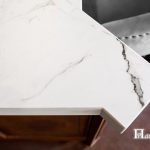NATURAL STONE IS AS OLD AS THE EARTH ITSELF
The three basic geological types of stone are:
- Igneous Rocks (Granite) are mainly formed through molten magma. As the magma cools and condenses, it crystallizes forming the wide variety of colors and patterns.
- Metamorphic Rock (Marble) which is formed of calcium carbonate minerals. Over time, pressure and movement, it crystallizes forming the range of color, variety and texture.
- Sedimentary Rocks (Limestone): This type of stone is a collection of bottom rocks, fossils, sand and silt. They were banded through time from the heavy pressure of the stone above.
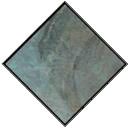
Quartzite
Is distinguished by its natural high quality sparkling appearances, and its shifting aesthetics as the light reflects from the variety of its mineral patterned surfaces. A variety of colors are available; very light white to silver, medium to dark grays, light to dark gold’s, soft greens to olive green, and a variety of blues. Quartz will weather well, but is highly absorbent. If used where oils from food will be present, it should be professionally treated with oil and water repellent.
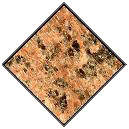
Granite
Like marble, granite is also a natural stone with many colors. However, the similarities stop here. Unlike marble, granite is composed of different materials with different properties. Granite is chiefly composed of 30% Quartz and 60% Feldspar. These minerals are much harder than the calcite of marbles and for this reason granite will not scratch as easily as marble. Granite is very resistant to most acids and will not etch nor leave a dull spot on the surface, as marble does. Hydrofluoric acids, however, found in products such as rust removers, will mar the surface of Granite. Granite contains crystals, which are very distinct, appearing like small to medium stones compacted together. There are some exceptions, such as Blue Azul will have a vein like pattern, but if you look closely, the vein will also have small distinct crystals.
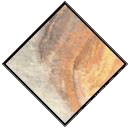
Slate
Slate is commonly gray in color, although you may find green, yellow and red hues. It is a material from metamorphosed state. That is, it consists of clay like materials that have undergone change under heat and pressure. Slate can be recognized by its sheet-like structure. The material is usually thin, and if broken, will flake off into sheets. Slate rarely is highly reflective, unless a coating is placed on top of it. Its surface is usually uneven, unless machine sanded. Slate is also prone to detonation around water areas.
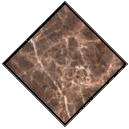
Marble
Marble is defined as any limestone that will take a polish. Limestones and therefore marbles are composed of minerals of calcite or dolomite. Colored marbles are the result of other minerals mixed with calcite or dolomite.Marble has many common characteristics. No matter what color, marble will usually have some type of veining running through it. The veins are usually different in color than the main color of the stone. There are, however, exceptions to the rule. Some marbles such as Thassos will have little or no veining. Marble is relatively soft when compared to other stones such as granite. It will scratch very easily. Marble is also very sensitive to acidic chemicals. Vinegar is acidic and will leave a dull spot on marble. Avoid the following acidic materials from coming in contact with your marble: Vinegar, lemon, tomato and tomato sauce, bleach, coffee, urine, vomit, tile cleaners, X-14, toilet bowl cleaners, and cleaners with lemon.
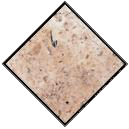
Limestone
Limestones are made of calcite from shells, coral and other debris. They are known as sedimentary rocks, because they are formed by the breakdown of other rocks, shells, etc. Limestones are usually loosely held together and may differ in porosity from marble. The course grain of some limestones give it excellent durability. Limestone can have numerous fossil impressions that are well preserved. If a piece of stone has various shell or animal like impressions in it, there is a good chance it is limestone. To identify limestone, look for fossil like impressions and loose grain structure. Limestone comes in various colors but most are shades of brown or tan, some leaning towards gray and red. All shades seem to fall into the earth tone color range. Limestone is becoming increasingly popular in the West and Southwest.
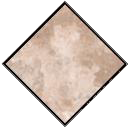
Travertine
Travertine is a type of limestone but differs in that it formed in a hot springs called karst. The water movement in this karst erodes the travertine creating holes in the stone. Polished travertine will usually have these holes filled with colored cement. These fillers typically are not polished and will give the travertine a blotchy appearance. Unfilled travertine will exhibit these holes and are commonly found on walls, floors, and building exteriors. Travertine is commonly found in tans and beige colors but can also be found in silver and reds.







